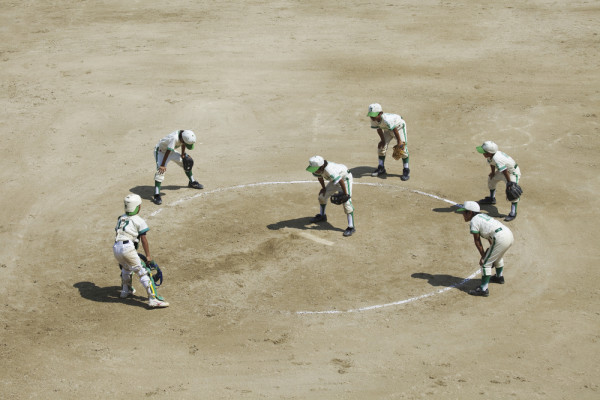We usually think of children as naturally flexible and relatively fit. As a result, coaches may skip warm-ups and stretching before and after workouts. However, dynamic warm-up exercises and stretching are important ways to teach young athletes good conditioning habits that will serve them for life. Warm-ups get the blood pumping to spread the flow of oxygen to the body, while stretching increases flexibility and decreases the risk of muscle and joint strain.
Younger players only need about ten minutes of warm-up exercises. These can include: running from one foul pole to another, a short jog with high knees followed by butt kicks, jumping jacks, arm windmills, neck circles, or a karaoke run — where crossover steps are run laterally. Make these warm-ups fun. Have players run sprints like they’re stealing base. Direct them to round the bases as if they just hit a home run. Have a throwing race.
Type Of Stretches
Stretching exercises should include the trunk, arms, legs and neck. For the legs, consider heel cord stretches to stretch the back of the calf. Try two different thigh stretches: The first thigh stretch should be done while sitting with legs stretched out in front while touching your toes. Over time, lean forward as you try to put your forehead on your knees keeping a flat back. The second thigh stretch should be done while sitting with one leg bent with your foot behind you, while the other leg remains straight. Lean backward until you feel the stretch in the front of the thigh.
Arm stretches are especially important in baseball. There are three different types of shoulder stretches to consider which can be done while standing or sitting. For the first stretch, raise the throwing arm straight past your ear. Grab the wrist with your other hand. Pull your arm over your head gently — this will stretch the inside of the shoulder.
The second shoulder stretch involves holding your throwing arm straight in front of you, grabbing the elbow with the other hand. Pull the throwing arm across your chest until a stretch is felt in the inside shoulder and back. For the third shoulder stretch, hold your throwing arm out to the side, bend the elbow so that your hand is even with your head and move your arm back until you feel the stretch in the front of your shoulder.
Last, But Not Least
The last areas to stretch are the lower back, trunk, and neck. For the lower back, lie on your back with one knee bent into your chest. Hold the knee to feel the stretch in the low back and repeat three times. Then switch legs.
A great trunk stretch can be done sitting on the ground. Place the foot of your bent leg on the opposite side of the knee of the outstretched leg. Twist your torso across the upright knee. Switch legs and twist the other way. To stretch the neck, perform head and neck circles. Make a slow circle with your head going one direction and then switch to the other direction.
When coaches plan their warm-ups carefully, they can reduce the time needed for stretching. For example, have the players jog from foul pole to foul pole and perform jumping jacks to get the blood circulating. Next, have the players do heel cord stretches, thigh stretches and lower back stretches. After stretching, have the players run with high-knees, butt kicks and a karaoke run. After running, players can do the head and neck circles and a trunk twist. Then begin hitting practice. After hitting practice is over, players can start shoulder stretches prior to throwing exercises.
Life Lessons
Little League should be fun. It should also build a firm foundation that will serve players well for the rest of their lives. Of course, you’re teaching skills, and they’re learning the value of teamwork and good sportsmanship. Another part of that foundation involves learning good habits that will gain importance as players grow older. Stretching and conditioning are some of the early skills coaches can teach that will provide players benefits long after they’ve outgrown Little League.
Shanna Brenner the Marketing Director of CoverSports. With roots tracing back to 1874, CoverSports is an American Manufacturer of turf protectors and other baseball field equipment.











One Response